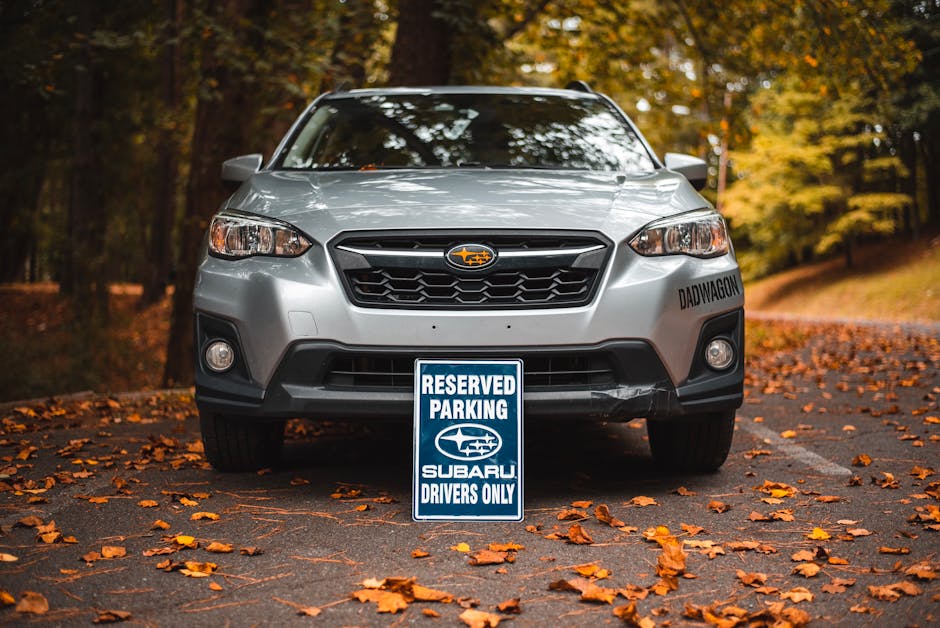Subaru Crosstrek: 10 Powerful Reasons to Love in 2025
What Makes the Subaru Crosstrek Stand Out?
The Subaru Crosstrek is a compact crossover SUV that combines versatility, capability, and efficiency in a right-sized package. If you’re looking for quick facts about this popular vehicle, here’s what you need to know:
- What it is: A compact crossover SUV based on the Subaru Impreza platform
- Key features: Standard Symmetrical All-Wheel Drive, 8.7″ ground clearance (9.3″ on Wilderness trim)
- Engine options: 2.0L (152 hp), 2.5L (182 hp), and hybrid variants
- Fuel economy: Up to 34 MPG highway with the 2.0L engine
- Price range: Starting at $24,995 (Base) to $31,995 (Wilderness) for 2025 models
- Reliability: 96% of Crosstreks sold in the last 10 years are still on the road
First introduced in 2012, the Subaru Crosstrek has evolved over three generations to become one of the most popular compact SUVs on the market. Currently in its third generation (since 2022), the Crosstrek offers a compelling blend of on-road comfort and off-road capability that has earned it recognition as MotorTrend’s #1 vehicle in its class and a Consumer Reports Top Pick.
What sets the Crosstrek apart from competitors is its standard all-wheel-drive system, impressive ground clearance, and boxer engine layout that provides a lower center of gravity for better handling. Whether you’re navigating city streets or exploring mountain trails, the Crosstrek delivers a balanced driving experience that’s hard to match in its segment.
The current lineup includes five trim levels (Base, Premium, Sport, Limited, and Wilderness), with the rugged Wilderness trim offering improved off-road capability including increased ground clearance and a boosted towing capacity of 3,500 pounds (compared to 1,500 pounds on other trims).

Subaru crosstrek terms to know:
What Is the Subaru Crosstrek? A Quick Evolution
The Subaru Crosstrek has quite the story to tell. What began as an ambitious concept vehicle blossomed into one of Subaru’s most beloved models when it hit production in 2012. At its heart, the Crosstrek is essentially a Subaru Impreza hatchback that’s been lifted, given more rugged styling, and equipped for trip with increased ground clearance and light off-roading capabilities. This simple but brilliant formula has resonated with drivers worldwide, turning the Crosstrek into a global sales success for Subaru.
The first-generation Crosstrek (2012-2017, called the XV in some markets) established the vehicle’s identity as the go-anywhere compact crossover. Powered by a 148-horsepower 2.0-liter BOXER engine and featuring Subaru’s legendary Symmetrical All-Wheel Drive system, it quickly found its audience. The reception was so positive that in its first full month of sales in Japan alone, an impressive 11,085 units were sold.
When the second-generation Crosstrek (2017-2022) arrived, it brought significant improvements thanks to the adoption of the Subaru Global Platform. This new foundation dramatically improved rigidity, reduced noise and vibration, and improved crash safety. This generation also marked an important milestone with the introduction of the first Crosstrek Hybrid, a plug-in hybrid electric vehicle (PHEV) that cleverly combined a 2.0-liter engine with electric motors.
Today’s third-generation Crosstrek (2022-present) continues to refine what makes this vehicle special, featuring updated styling, improved technology, and the introduction of the trip-ready Wilderness trim in 2023. The latest iteration has collected numerous awards along the way, including being crowned #1 in its class by MotorTrend and earning a coveted Top Pick designation from Consumer Reports.
Subaru Crosstrek over Three Generations

The journey of the Subaru Crosstrek across its three generations showcases Subaru’s dedication to continuous improvement while staying true to the vehicle’s adventurous spirit.
First Generation (2012-2017) introduced us to the Crosstrek concept with its initial 148-hp 2.0L BOXER engine. Drivers could choose between a 5-speed manual or CVT transmission, and the impressive 8.7 inches of ground clearance immediately set it apart from typical compact cars. The infotainment system was basic but functional, with available navigation for those weekend getaways. In 2014, Subaru dipped its toes into electrification with the first hybrid variant (though it was discontinued by 2016).
The Second Generation (2017-2022) brought significant improvements by adopting the more rigid Subaru Global Platform. This change wasn’t just marketing talk—owners immediately noticed the improved ride quality and reduced noise, vibration, and harshness. The EyeSight driver assistance technology became more sophisticated, and tech-savvy buyers appreciated the available 8-inch touchscreen infotainment system. The exterior styling evolved with more pronounced wheel arches, giving it a more confident stance. Perhaps most notably, this generation introduced a proper plug-in hybrid variant offering 17 miles of electric-only range.
With the current Third Generation (2022-present), Subaru has refined almost every aspect of the Crosstrek. The exterior design features more angular, contemporary styling that turns heads without being flashy. Power options expanded with the addition of a 2.5L engine option delivering a more satisfying 182 horsepower. For those who truly want to venture off the beaten path, the new Wilderness trim offers an impressive 9.3 inches of ground clearance and an improved X-MODE system for tackling tough terrain. Inside, you’ll find better materials, a more thoughtful design, and modern tech including wireless Apple CarPlay and Android Auto. Higher trims showcase an impressive 11.6-inch portrait-oriented touchscreen that dominates the center console.
Across these generations, the most meaningful improvements have focused on chassis refinement, technology integration, and expanding the available powertrains and trim levels. The third generation particularly demonstrates Subaru’s commitment to enhancing both everyday comfort and weekend trip capability, with the Wilderness trim standing as the ultimate expression of the Crosstrek’s trip-ready credentials.
Subaru Crosstrek: Features, Trim Levels & Specs
The Subaru Crosstrek is like that friend who’s ready for anything – whether it’s a quick run to the grocery store or a weekend trip in the mountains. For 2025, Subaru offers a lineup that grows with you, from the value-packed Base to the trail-conquering Wilderness.
Let’s take a walk through the family:
The Base Trim starts at around $24,995 and comes surprisingly well-equipped. You’ll get the 152-horsepower 2.0L BOXER engine, Symmetrical All-Wheel Drive (a Subaru signature that comes standard on every Crosstrek), and a generous 8.7 inches of ground clearance that’ll have you sailing over obstacles that leave other compact SUVs scraping their bellies. The 7-inch dual touchscreen with Apple CarPlay and Android Auto means you’ll stay connected, while EyeSight Driver Assist Technology keeps an extra pair of electronic eyes on the road.
Step up to the Premium Trim (around $26,145) and things get cozier with heated front seats that make winter mornings much more bearable. The leather-wrapped steering wheel adds a touch of refinement, and the All-Weather Package proves Subaru understands that trips often happen when the weather isn’t perfect. The 6-speaker audio system ensures your road trip playlist sounds just right.
The Sport Trim (starting around $28,995) brings more muscle with the 2.5L BOXER engine pumping out 182 horsepower. You’ll spot a Sport model by its distinctive styling cues and yellow interior stitching that adds a playful pop of color. The StarTex water-repellent upholstery is perfect for when you’re coming back from a hike or beach day, and the dual-function X-MODE helps you steer tricky terrain with confidence.
For those who appreciate the finer things, the Limited Trim (around $30,095) wraps you in leather-trimmed upholstery and offers a 10-way power-adjustable driver’s seat that’s a blessing on longer journeys. The 18-inch alloy wheels add a touch of sophistication, while Blind-Spot Detection with Rear Cross-Traffic Alert provides extra peace of mind in busy parking lots and highway lane changes.
The rugged Wilderness Trim (around $31,995) is the newest member of the family and takes the Crosstrek’s already impressive capabilities to new heights – literally. With 9.3 inches of ground clearance, all-terrain tires, and improved X-MODE settings for deep snow and mud, this is the Crosstrek that’s ready to venture where the map ends. It can even tow up to 3,500 pounds – more than double the capacity of other trims.
What sets the Subaru Crosstrek apart in a sea of compact SUVs is that Symmetrical All-Wheel Drive comes standard across the board. While competitors often charge extra for AWD (if they offer it at all), Subaru believes capability shouldn’t be an option.
Fuel efficiency remains impressive despite the go-anywhere attitude. The 2.0L engine delivers up to 34 MPG highway, while the more powerful 2.5L still manages to return 27 city/34 highway/29 combined MPG (a bit less on the Wilderness due to those knobby tires and taller stance).
Express your personality with vibrant color options like Plasma Yellow Pearl (which practically glows in sunlight), Desert Khaki, or Oasis Blue. Of course, classics like Crystal White Pearl, Magnetite Gray Metallic, and Crystal Black Silica are available for those who prefer understated elegance.
Planning a road trip? The Subaru Crosstrek has earned its reputation as one of the Best Compact SUVs for Road Trips thanks to its perfect blend of comfort, efficiency, and “let’s take that scenic detour” capability.
Subaru Crosstrek Interior Dimensions
The Subaru Crosstrek may wear compact SUV credentials, but step inside and you’ll find it feels anything but small. Despite its trip-ready exterior dimensions, Subaru has worked some interior packaging magic.
Front passengers enjoy a generous 39.8 inches of headroom and stretch-out-comfortable 43.1 inches of legroom. Even rear-seat passengers aren’t treated as an afterthought, with 38.0 inches of headroom and 36.5 inches of legroom – enough space for adults to sit comfortably on longer journeys.
The shoulder room (56.7 inches front/55.6 inches rear) and hip room (54.5 inches front/53.5 inches rear) mean you won’t be playing elbow hockey with your passengers. Overall, the cabin offers 100.9 cubic feet of passenger volume – impressive numbers for this vehicle class.
When it comes to cargo, the Crosstrek delivers practical versatility. Behind the rear seats, you’ll find 20.0 cubic feet – enough for a grocery run or weekend bags for four. Fold those 60/40-split rear seats down, and the space expands to 55.3 cubic feet, swallowing bikes, camping gear, or that impulse furniture purchase with ease.
The seats themselves deserve special mention. They’re designed for real people on real journeys – supportive enough for all-day comfort but not so aggressively bolstered that they’re difficult to get in and out of. Higher trims offer a 10-way power-adjustable driver’s seat with lumbar support that makes finding your perfect position a breeze.
Materials get progressively more premium as you move up the trim ladder. The Base and Premium feature quality cloth upholstery, while the Sport introduces StarTex water-repellent material that’s perfect for active lifestyles. The Limited wraps you in leather-trimmed comfort, and the Wilderness features specially-designed water-resistant StarTex with distinctive copper-colored stitching and embossed Wilderness logos.
One practical tip from real owners: if you live somewhere that sees serious summer heat and plan to use your Crosstrek for outdoor trips, the cloth seats in the Base and Premium might be more comfortable than the leatherette options, which can get quite warm after sitting in the sun during your hike or bike ride.
Subaru Crosstrek Safety Tech & Ratings
Safety isn’t just a feature in the Subaru Crosstrek – it’s built into the vehicle’s DNA. Subaru has earned a reputation for building some of the safest vehicles on the road, and the Crosstrek proudly carries that torch.
At the heart of the Crosstrek’s safety credentials is the EyeSight Driver Assist Technology, standard on all models equipped with the CVT transmission. Think of EyeSight as a vigilant co-pilot that’s always scanning the road ahead through its dual-camera system. It includes Pre-Collision Braking that can apply full stopping power in emergencies, Adaptive Cruise Control for less stressful highway driving, and Lane Departure and Sway Warning with Lane Keep Assist to help you stay between the lines.
The 2024 and 2025 models feature Subaru’s latest EyeSight system, which they describe as “safer than ever” thanks to improved detection capabilities and processing power. It can react faster and more effectively to potential hazards, potentially making the difference between a close call and a collision.
Beyond EyeSight, every Crosstrek comes equipped with Vehicle Dynamics Control featuring Active Torque Vectoring for better handling in slippery conditions, a comprehensive 4-wheel anti-lock braking system, Tire Pressure Monitoring System to alert you of potentially dangerous pressure drops, and a Rear-Vision Camera that takes the guesswork out of backing up.
Higher trims add even more safety tech, including Blind-Spot Detection with Lane Change Assist and Rear Cross-Traffic Alert – particularly useful features in today’s busy traffic environments. Some models also offer Reverse Automatic Braking, which can apply the brakes if it detects an obstacle behind you while backing up.
The available STARLINK Safety and Security system adds another layer of protection with Advanced Automatic Collision Notification, which can alert emergency services if you’re in an accident, SOS Emergency Assistance for help at the touch of a button, and Remote Services that let you lock or open up doors, locate your vehicle, or sound the horn and lights from your smartphone.
For families, the Crosstrek includes the LATCH (Lower Anchors and Tethers for Children) system in the rear outboard seats, making proper car seat installation straightforward and secure.
Perhaps the most telling safety statistic is this: 96% of Crosstrek vehicles sold in the last decade are still on the road today. That impressive durability speaks volumes about Subaru’s commitment to building vehicles that protect their occupants year after year, mile after mile.
Performance, Efficiency & Off-Road Capability
The Subaru Crosstrek isn’t just about looking rugged—it actually delivers where it counts. Whether you’re seeking efficiency for daily commuting or capability for weekend trips, there’s a Crosstrek powertrain that fits the bill.
When it comes to what’s under the hood, you’ve got choices that balance power and efficiency. The base 2.0L BOXER engine provides a respectable 152 horsepower and 145 lb-ft of torque—plenty for everyday driving while still delivering impressive fuel economy. If you’re like me and occasionally wish for a bit more oomph when merging onto highways, the 2.5L engine might be more your style with its 182 horsepower and meatier 178 lb-ft of torque. Subaru has actually fine-tuned this engine for the 2024/2025 models to deliver more responsive acceleration right where you need it most.
For the eco-conscious, the previous generation’s plug-in hybrid offered 17 miles of electric-only driving—perfect for short commutes—while providing a total range of 480 miles. The good news is that a new, more powerful hybrid with 194 combined horsepower is coming for 2026.

At the pump, the Subaru Crosstrek won’t disappoint. The 2.0L with CVT transmission achieves an impressive 27 city/34 highway/29 combined MPG. Even the more powerful 2.5L engine in the Sport and Limited trims maintains excellent efficiency at 26 city/33 highway/29 combined MPG. The Wilderness trim, with its all-terrain tires and higher stance, still manages a respectable 25 city/29 highway/27 combined MPG. If you’re specifically looking for fuel-sippers, check out our guide to Fuel-Efficient SUVs.
Where the Crosstrek truly comes into its own is when the pavement ends. With 8.7 inches of ground clearance on standard models—boosted to a remarkable 9.3 inches on the Wilderness trim—this compact SUV can tackle terrain that would leave competitors stranded.

The X-MODE system, standard on all CVT models, isn’t just marketing hype—it genuinely transforms how the vehicle handles off-road. By optimizing engine output, transmission ratio, and AWD torque distribution, X-MODE helps maintain traction in slippery conditions. Sport and higher trims get an improved dual-function version, while the Wilderness receives special settings for deep snow and mud.
Need to bring gear along? The Subaru Crosstrek has you covered with a 1,500-pound towing capacity on standard trims. The Wilderness trim ups the ante significantly with a 3,500-pound capacity (when equipped with trailer brakes)—enough for a small camper or boat.
The Wilderness trim deserves special mention for outdoor enthusiasts. Beyond the increased ground clearance, it features improved approach (20.0 degrees), breakover (21.1 degrees), and departure (33.0 degrees) angles that help you steer tricky terrain without scraping. The Yokohama GEOLANDAR all-terrain tires on 17-inch matte black wheels provide grip when you need it most.
At the heart of every Crosstrek is Subaru’s Symmetrical All-Wheel Drive system. Unlike some competitors that only engage all wheels when slippage is detected, Subaru’s system continuously powers all four wheels, instantly directing torque to where it’s needed most. This proactive approach means you maintain control before wheel slip becomes a problem.
It’s no wonder NZ4WD Magazine recently named the Crosstrek its Compact SUV of the Year. As they noted, few vehicles blend on-road comfort with genuine off-road capability as seamlessly as the Subaru Crosstrek. Whether you’re heading to work on Monday or heading into the wilderness on Saturday, this versatile crossover has you covered.
Buying, Ownership & Reliability Insights
Thinking about bringing a Subaru Crosstrek into your life? Let’s talk about what that really means for your wallet and peace of mind—from the moment you sign the papers to the years of trips ahead.
The 2025 Crosstrek lineup offers something for every budget, starting with the Base trim at $24,995 and ranging up to the trail-ready Wilderness at $31,995. These prices don’t include the destination charge (typically around $1,295), taxes, or registration fees. If you’re considering the pre-owned route, you’ll be pleased to know that Crosstreks hold their value impressively well—most 2-3 year old models retain 70-80% of their original value, which speaks volumes about their lasting appeal.
When it comes to warranty protection, Subaru offers pretty standard coverage: 3 years/36,000 miles basic, 5 years/60,000 miles on the powertrain, and 5 years with unlimited mileage against rust perforation. If you opt for a hybrid model, those specific components get extended coverage for 8 years or 100,000 miles.
The Subaru Crosstrek has built quite the reputation for reliability. With a stellar 4.6 out of 5 rating based on 94 customer reviews on CarMax, owners are clearly satisfied with their purchase. Perhaps the most telling statistic: an impressive 96% of Crosstreks sold in the last decade are still faithfully serving their owners on the road today.
That said, no vehicle is perfect. Early CVT transmissions (before 2018) occasionally faced premature failure issues, though Subaru responded by extending warranties on these components to 10 years/100,000 miles. Some owners have mentioned wind noise at highway speeds, occasional infotainment glitches, and a few North American drivers feel the base 2.0L engine could use more pep. The good news? Subaru has addressed many of these concerns in the latest generation, improving sound insulation and offering the more robust 2.5L engine option in Sport trims and above.
When you listen to actual Crosstrek owners, certain themes consistently emerge in their praise: all-weather capability that inspires confidence, impressive fuel efficiency that keeps road trip costs down, a comfortable ride that doesn’t punish on longer journeys, reliable performance day after day, and safety features that provide genuine peace of mind. One common critique does surface regarding the factory audio system—with one owner mentioning they upgraded to aftermarket JBL speakers and an amplifier to get the sound quality they desired.
For anyone planning trips into the great outdoors, the Crosstrek has become something of a cult favorite. Its blend of compact dimensions and genuine capability makes it ideal for everything from beach camping to mountain biking excursions. If you’re weighing your options for trip-ready vehicles, check out our guide to Best Cars for Outdoor Trips.
Looking to test drive a Crosstrek? Visit us at: 3930 Byrd Dr Loveland, CO 80538 where our team at Subaru of Loveland can help you explore all your options. Call us at 970-622-1019 to schedule your visit.
Off-Road vs Daily-Driver Cost Considerations
Owning a Subaru Crosstrek involves different costs depending on how you use it. Let’s break down what to expect if you’re primarily a pavement-pounder versus someone who regularly ventures off the beaten path.
Tires tell the first part of this story. With normal daily driving, your stock tires should last between 40,000-60,000 miles. Take that same Crosstrek regularly off-road, and you might see that lifespan shrink by 20-30%. The Wilderness trim’s beefier all-terrain tires offer better durability when the pavement ends, but they do create a bit more road noise and might knock a mile or two off your highway MPG.
Your fuel budget will definitely reflect your driving habits. Stick to highways and you’ll likely get close to that impressive 34 MPG rating (with the 2.0L engine). Mix in regular off-road trips, and you could see that efficiency drop by 15-25%. Even activating X-MODE for those trickier situations will sip a bit more fuel while engaged.
Many serious off-roaders find themselves gradually adding protective and functional accessories. Skid plates ($300-$500) shield your undercarriage from rocks and debris. Roof rack systems ($500-$1,000) expand your cargo options for bikes, kayaks, or camping gear. Recovery gear ($200-$400) becomes essential insurance for more remote destinations. And if you decide to upgrade from stock tires to dedicated all-terrains, budget $800-$1,200 for a quality set.
The maintenance schedule shifts too. Off-road enthusiasts should consider more frequent oil changes, keep a closer eye on suspension components that work harder on trails, and make undercarriage inspections a regular habit rather than an occasional check.
Here’s an interesting twist on depreciation: Crosstreks that have been used for their intended purpose—moderate off-roading and outdoor trips—often maintain strong resale values, especially the Wilderness trim. The market understands these vehicles were built for trip, and used buyers specifically seek out these capabilities.
For those balancing daily commutes with weekend trips, the Premium or Sport trims hit a sweet spot of comfort, efficiency, and capability without breaking the bank. If your plans include more challenging terrain, the Wilderness trim’s higher initial cost includes factory-installed features that would cost significantly more to add piecemeal later on.
Frequently Asked Questions about the Subaru Crosstrek
How has the Crosstrek changed since it debuted?
The Subaru Crosstrek has come a long way since it first appeared on our roads back in 2012. What started as essentially a lifted Impreza has evolved into a capable compact SUV with its own distinct personality.
When the first-generation Crosstrek (2012-2017) rolled onto dealer lots, it introduced us to the formula that would define this vehicle: standard all-wheel drive, a generous 8.7 inches of ground clearance, and a practical crossover design. With its modest 148 horsepower engine, it wasn’t winning any drag races, but it quickly found fans who appreciated its go-anywhere attitude.
The second generation (2017-2022) brought some serious upgrades under the skin. Subaru moved the Crosstrek to their more rigid Global Platform, which you could feel immediately in the improved ride quality and handling. This generation also welcomed the first plug-in hybrid Crosstrek and improved the technology package with better driver assistance features. The cabin became noticeably quieter, and the overall feeling was of a more refined vehicle.
Today’s third-generation Crosstrek (2022-present) represents the most sophisticated version yet. The exterior styling has become more angular and distinctive, while the addition of the 2.5L engine option (with a welcome boost to 182 horsepower) addresses one of the most common customer requests. Perhaps most exciting for trip lovers is the introduction of the Wilderness trim, which bumps ground clearance to 9.3 inches and adds a host of off-road focused upgrades.
Throughout its evolution, the Subaru Crosstrek has maintained its core identity while improving in nearly every measurable way – from safety and technology to comfort and capability. What hasn’t changed is its unique position as an trip-ready compact SUV that doesn’t sacrifice daily drivability.
What engine delivers the best balance of power and MPG?
If you’re shopping for a Subaru Crosstrek and trying to decide which engine to choose, most buyers will find the 2.5L BOXER engine hits the sweet spot between pep and efficiency.
Available in the Sport, Limited, and Wilderness trims, this engine delivers a substantial power upgrade with 182 horsepower and 178 lb-ft of torque – that’s 30 more horses and 33 more lb-ft than the base 2.0L engine. You’ll feel the difference every time you merge onto the highway or pass on a two-lane road, with 0-60 mph times improved by nearly 1.5 seconds (approximately 7.8 seconds versus 9.2 for the 2.0L).
The beauty of this engine choice is that the fuel economy penalty is surprisingly small. The 2.5L engine in the Sport and Limited trims delivers 26 MPG city, 33 MPG highway, and 29 MPG combined – just 1 MPG less in combined driving than the base 2.0L with CVT. That’s a small price to pay for the noticeable improvement in driving dynamics.
This extra power becomes particularly valuable when you’re carrying passengers and cargo, or when driving in mountainous regions where naturally aspirated engines lose some of their punch at elevation. Many owners report that the 2.5L engine transforms the Crosstrek from feeling somewhat underpowered to feeling just right.
For the truly efficiency-minded, the 2.0L with CVT does eke out slightly better numbers at 27/34/29 MPG. And if you can wait until 2026, the upcoming Hybrid model promises to be the efficiency champion while also delivering the strongest performance in the lineup with 194 combined horsepower.
Can the Crosstrek Wilderness really tow 3,500 lbs?
Yes, the Subaru Crosstrek Wilderness can indeed pull 3,500 pounds – more than double what other Crosstrek trims can handle. This isn’t just a number on a spec sheet; Subaru has made real mechanical changes to ensure the Wilderness can handle this kind of load safely and reliably.
When the engineers at Subaru set out to create the Wilderness trim, they didn’t just lift the suspension and add some rugged styling cues. They reinforced the vehicle’s towing infrastructure from the ground up. The Wilderness features a revised CVT transmission with an additional oil cooler to manage heat during towing. They strengthened the mounting points where the tow hook attaches to the chassis, improved the cooling system, and even modified the final drive ratio to 4.44:1 (compared to 3.70:1 in standard models) for better low-end grunt when pulling a load.
There are a few important things to know if you’re planning to tow with your Crosstrek Wilderness. First, to safely tow the full 3,500 pounds, your trailer needs to have its own braking system. Second, proper weight distribution becomes especially important when towing with a compact SUV – follow Subaru’s guidelines carefully.
While the Wilderness can technically handle 3,500 pounds, many owners find it performs best with somewhat lighter loads in the 2,000-3,000 pound range, particularly in hilly or mountainous terrain. And be prepared for your fuel economy to take a hit of 30-40% when towing near the maximum capacity.
What does this mean in practical terms? The Crosstrek Wilderness can comfortably tow small camping trailers, utility trailers, or lightweight boats – opening up trip possibilities that would be off-limits to standard Crosstrek models or many competing compact SUVs. For weekend warriors who need occasional towing capability without moving up to a larger vehicle, the Wilderness hits a unique sweet spot in the market.
Conclusion & Next Steps

The Subaru Crosstrek has earned its place in the hearts of drivers by doing something special – bridging the gap between practical daily transportation and genuine trip capability. It’s like having a trusted friend who’s equally comfortable grabbing coffee in the city or heading into the mountains for a weekend trip.
Throughout our journey exploring this versatile vehicle, we’ve seen how its standard all-wheel drive, impressive ground clearance, and thoughtfully designed trim levels create options for nearly every lifestyle and budget.
Looking toward the horizon, the Crosstrek’s future shines even brighter. The upcoming 2026 Subaru Crosstrek Hybrid is scheduled to arrive in early fall 2025, bringing with it an impressive 194 combined horsepower while promising to be the most fuel-efficient and environmentally friendly Crosstrek yet. Tech enthusiasts will appreciate the fully digital 12.3-inch gauge cluster and 11.6-inch touchscreen, while trip lovers can rest easy knowing it still packs Subaru’s legendary Symmetrical All-Wheel Drive capability.
If you’re considering making a Crosstrek your next vehicle companion, we at Car News 4 You have a few friendly suggestions. First, spend time behind the wheel of both the 2.0L and 2.5L engine options – the difference in performance is something you’ll feel rather than just read about. Think honestly about how you’ll use your vehicle most days – daily commuters might find their sweet spot in the Premium or Sport trims, while those planning regular off-road excursions should seriously consider the Wilderness with its improved capabilities.
Don’t rush through the color selection process either! The Subaru Crosstrek offers some genuinely head-turning options like Plasma Yellow Pearl and Desert Khaki that look quite different in person than in photos. And before signing on the dotted line, check current incentives and financing offers, which might make that higher trim level more accessible than you initially thought.
What makes the Crosstrek truly special is its remarkable balance. With 96% of models from the last decade still faithfully serving their owners, its reliability record speaks volumes. Standard EyeSight safety technology on CVT models provides peace of mind, while its versatile nature means it adapts to your life rather than forcing you to adapt to it.
Whether you need a sensible daily driver that can occasionally escape to the wilderness or a more serious off-road companion that won’t punish you on paved roads, there’s likely a Subaru Crosstrek configuration that feels like it was made just for you.
For more inspiration on vehicles that excel at balancing everyday practicality with trip readiness, take a look at our guide to Trip-Ready Vehicles.
The Subaru Crosstrek continues to prove an important point in today’s automotive landscape – you don’t need a massive, fuel-thirsty SUV to enjoy outdoor trips. Sometimes the perfect vehicle is the one that’s just right for both Monday morning commutes and Saturday mountain escapes.







